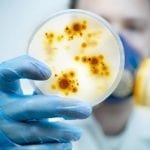 Religion
Religion  Religion
Religion  Weird Stuff
Weird Stuff 10 Horrifying Final Destination-Like Accidents
 Movies and TV
Movies and TV 10 Music Biopics That Actually Got It Right
 History
History 10 Momentous Events That Also Occurred on July 4th
 Animals
Animals 10 Times Desperate Animals Asked People for Help… and Got It
 Movies and TV
Movies and TV 10 Movie Flops That Found Their Way to Cult Classic Status
 History
History 10 Things You Never Knew About Presidential First Ladies
 Movies and TV
Movies and TV 10 Zombie Movies That Will Actually Terrify You
 Humans
Humans 10 Times Scientists Were Absolutely Sure… and Absolutely Wrong
 Our World
Our World 10 Pivotal Moments for Life on Earth
 Religion
Religion 10 Innovations and Discoveries Made by Monks
 Weird Stuff
Weird Stuff 10 Horrifying Final Destination-Like Accidents
 Movies and TV
Movies and TV 10 Music Biopics That Actually Got It Right
Who's Behind Listverse?

Jamie Frater
Head Editor
Jamie founded Listverse due to an insatiable desire to share fascinating, obscure, and bizarre facts. He has been a guest speaker on numerous national radio and television stations and is a five time published author.
More About Us History
History 10 Momentous Events That Also Occurred on July 4th
 Animals
Animals 10 Times Desperate Animals Asked People for Help… and Got It
 Movies and TV
Movies and TV 10 Movie Flops That Found Their Way to Cult Classic Status
 History
History 10 Things You Never Knew About Presidential First Ladies
 Movies and TV
Movies and TV 10 Zombie Movies That Will Actually Terrify You
 Humans
Humans 10 Times Scientists Were Absolutely Sure… and Absolutely Wrong
 Our World
Our World 10 Pivotal Moments for Life on Earth
Top 10 Scientific Breakthroughs Of The Month (March 2019)
All things considered, 2019 is shaping up to be an enthralling year for science and technology. Here, we review 10 of the best scientific breakthroughs that made waves or may have flown under the radar over the past month.
Papers have been published on everything from a ketamine-related antidepressant nasal spray to a potential new method for treating Alzheimer’s. A stellar new species of frog rubs shoulders with a male contraceptive pill. Fascinating stuff.
10 Hangover-Free Alcohol

Researchers have produced a synthetic drink that replicates the feeling of alcohol without having to suffer a hangover the next morning.
The drink, named Alcarelle, contains a synthetic molecule known as alcosynth which can target the enjoyable areas of the brain while carefully avoiding the unpleasant areas. Alcosynth, much like regular alcohol, induces tipsiness by stimulating the brain’s GABA receptors. Unlike regular alcohol, it bypasses the receptors responsible for adverse, nauseating side effects.
Professor David Nutt, who created alcosynth with David Orren, lost his job working for the British government after he controversially claimed that alcohol is more dangerous than Ecstasy and LSD. In spite of this, he has remained dedicated to improving the safety of the drinks industry.
At the moment, Alcarelle is not available outside of the lab. The drink still has to be safety tested and regulated before it is deemed fit for consumption. However, Nutt hopes it will be on the market in as little as five years.[1]
9 Starry Dwarf Frog Discovered

A group of researchers has unearthed an entirely new species of frog while out in the mountains of India. The newly discovered amphibian is around 2–3 centimeters (0.8–1.2 in) in length with orange-and-brown skin which is speckled with tiny starlike spots. Scientists have decided to call this species Astrobatrachus kurichiyana, which translates as “starry dwarf frog.” The name was given due to its distinctive bright markings.
The research team, which hails from the US and India, believes that the starry dwarf frog is the last surviving member of an ancient lineage. Their most recent common ancestor is said to have lived around 57 million to 76 million years ago.
The team first came across the speckled frogs hiding under leaf litter while they were surveying wildlife in the Western Ghats mountain range back in 2010. Subsequent assessment has confirmed that Astrobatrachus kurichiyana is a new species of frog descended from a completely new subfamily of Indian and Sri Lankan amphibian.[2]
8 Subconscious Magnetic Sense

Are our brains able to tune in to the Earth’s magnetic field? According to Joseph Kirschvink, a geobiology professor at the California Institute of Technology, the evidence suggests that they do.
For their studies, Kirschvink and his team sat individual participants inside a six-sided wire cage. When a current is run through the wire coils, they produce a magnetic field similar to Earth’s. (The exact strength and direction depends on the current.) The researchers would then manipulate the cage’s magnetic field while an electroencephalogram measures the participant’s brain activity.[3]
Kirschvink found that the participants responded to the experiment by subconsciously “freaking out,” suggesting that our brains can sense changes in the magnetic field on some level. Similar magnetic senses—or, to use the technical term, magnetoreception—have been observed in cattle, turtles, and pigeons.
7 Electronics Made From Skin

One day, we may be building electronic devices from our own skin. Melanin, the pigment responsible for coloring our skin and hair, could be one of the building blocks of the bionic implants and technology of tomorrow.
Using a newly discovered technique, scientists can drastically improve the pigment’s ability to conduct electricity. In fact, Italian nanoscientist Paolo Tassini and his colleagues have managed to increase the conductivity of melanin a billion times over.
Typically, eumelanin, the most common form of melanin, is composed of millions of sheets piled chaotically on top of each other. The group of researchers has discovered a method for heating up the material in a vacuum to radically improve its conductivity. During the process, the sheets are brought out of disarray and arrange themselves in a parallel configuration.
It is thought that eumelanin may take the place of metals in bioelectronic devices like brain implants in the future. The pigment is naturally produced in our bodies, and for that reason, our immune system is more likely to accept it than a substance like copper.[4]
6 Worm Regeneration
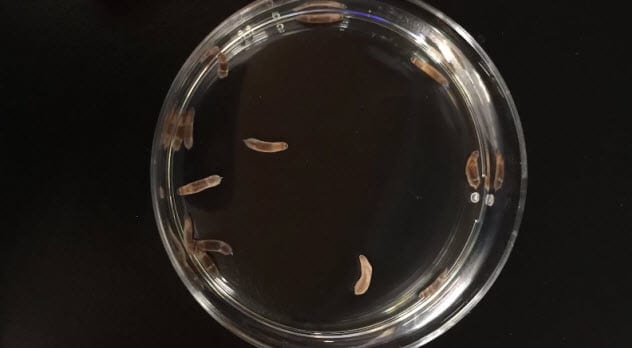
As any mildly sadistic child will tell you, an earthworm has the amazing ability to grow back its body after being cut in half. At Harvard University, a group of researchers is exploring the origin of these incredible powers of regrowth while making a number of discoveries about the genome.
Led by Professor Mansi Srivastava, the team has identified the master control gene that is responsible for regeneration in three-banded panther worms. This master control gene, known as early growth response (EGR), masterminds the regeneration process by effectively switching sections of DNA on and off. This is only possible due to the dynamic nature of DNA, an area of biology that scientists are still trying to unlock.
In her research paper, Srivastava also explores why other species that use the EGR control gene, including humans, are unable to regenerate. It is hoped that future research can further our understanding of DNA—the blueprint for all of human life—as well as potentially enhance our abilities for regrowth and repair.[5]
5 Alzheimer’s Treated In Mice
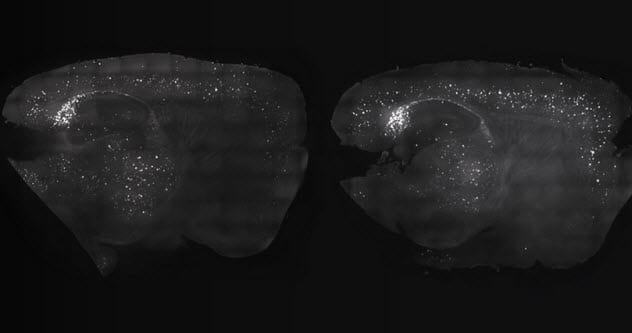
Alzheimer’s disease is a devastating chronic condition that currently has no known cure. However, neuroscientists at MIT’s Picower Institute have made a potentially great stride forward in developing a treatment. The group has discovered that exposing mice to flickering lights and rapid clicking noises seems to keep Alzheimer’s at bay.
The strobe lights and high-speed clicking also appear to improve the memory skills of mice with symptoms of Alzheimer’s disease. These external stimuli induce brain waves that positively alter the composition of proteins in the brain. According to the research findings, mice that listened to the clicks for an hour a day performed faster in maze challenges and had considerably better object recognition skills.
There is still a large amount of research that needs to be carried out. Exactly how these brain waves enhance the cerebral capacity remains a mystery. Also, scientists have yet to determine whether similar treatments will translate from mice to human patients. If so, this could be the first step in a revolutionary new technique for addressing neurodegenerative diseases.[6]
4 Male Contraceptive Pill

It looks as if we are one step closer to getting a male contraceptive pill. A recent trial found that the drug brought down the levels of hormones that lead the testes to produce sperm. Scientists will now need to determine whether the sperm count itself has fallen by a sufficient amount.
During the trial, which was led by researchers at the University of Washington in Seattle, 40 healthy volunteers took a capsule each day with food. Three-quarters received a dose of the contraceptive drug 11-beta-MNTDC, and the remaining 10 just consumed placebos. Scientists discovered considerably lower levels of certain hormones among the men that took the drug, a decent indication that fewer sperm are being produced.
Although no significant side effects were reported by any of the volunteers, a few experienced headaches, lessened libido, and mild erectile dysfunction.
While women can choose from a broad array of different contraceptives, men are limited to either condoms or vasectomies. A “male pill” would open up the range of options available to men as well as alleviate women of some of the responsibility for not getting pregnant.[7]
3 Growing A Tiny Brain
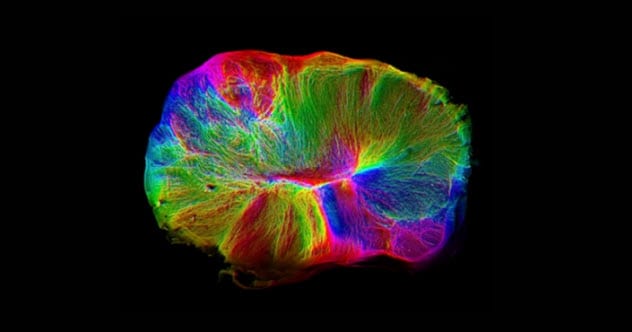
The human brain is a thing of exquisite beauty. It is also phenomenally complex. Neurons fire off messages at breakneck speed across an intricate web of pathways. Every one of our thoughts and actions—everything from complex emotions to jerk reflexes—is controlled by that great cerebral nexus. Creating a replica human brain would be a prodigious challenge. We aren’t even entirely sure how it works in the first place.
In a staggering feat of science, researchers at Cambridge University have managed to grow a miniature, simplified human brain the size of a lentil. In some senses, the tiny bead of gray matter resembles the brain of a human fetus after three to four months of pregnancy. In terms of size, it sits somewhere between a cockroach and a zebra fish.
In recent years, scientists have produced a number of faux human brains, each more advanced than the last. This latest development goes further still, introducing a primitive kind of central nervous system.
Biologist Madeline Lancaster and her colleagues attached a spinal cord and muscle tissue to the droplet brain. The organoid automatically reached out and connected to the spinal cord, firing off electrical impulses that caused the muscles to twitch.[8]
By studying systems like this, scientists hope to further their understanding of conditions such as motor neurone disease, epilepsy, and schizophrenia.
2 Antidepressant Ketamine
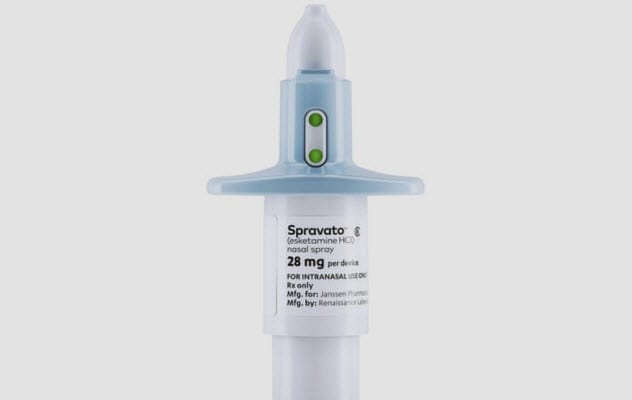
In 1996, California indie band Eels achieved underground stardom with their debut single about taking novocaine for the soul. It now appears they might have been better off trying ketamine instead.
Experts are celebrating a potential watershed moment in mental health treatment after a ketamine-related antidepressant was given the green light earlier in the month. Esketamine, which will be branded as the nasal spray Spravato, has been approved by the US Food and Drug Administration (FDA) for treatment when traditional psychiatric drugs are not appropriate.
Although there is a vast array of different brands and styles, all currently available antidepressants work in effectively the same way. Typically, patients are required to wait weeks before they feel the results of their treatment, whereas esketamine is said to be rapid-acting. The effects kick in within a matter of hours or days.
Despite FDA approval of the drug, some experts remain skeptical. They are concerned by the long history of people abusing ketamine as a recreational hallucinogenic. However, this is not the first time that the drug has been used for medical purposes. For decades, surgeons have relied on ketamine as an anesthetic. In the early 2000s, the drug was introduced as an intravenous treatment for depression.
This marks the first time that esketamine has been approved to treat depression. As such, it is still in its infancy. There are a number of setbacks that need ironing out before the drug can be rolled out on a mass scale.
Due to the potential for abuse, it can only be administered by trained professionals in approved clinics. The price is hardly cheap, either: The initial month of treatment will cost somewhere in the region of $4,720 to $6,785. Nonetheless, psychiatrists remain optimistic that the FDA’s decision could usher in a new class of rapid-acting antidepressants.[9]
1 Patient Cured Of HIV

A patient in London has made history after becoming the second person to be cured of HIV. This anonymous patient became free of the virus after receiving a bone marrow transplant.
The donor of the transplanted stem cells has an unusual genetic mutation which makes them resistant to HIV. In the 18 months since the London patient stopped taking his antiretroviral medication, there have been no indicators that the HIV has returned.
Scientists will never be able to consider bone marrow transplant as a large-scale cure for HIV. The procedure comes with a number of serious risks. However, the success of the London patient and of Timothy Brown, the first person to be cured back in the 2000s, serves as confirmation that recovery is possible.
Anton Pozniak, the president of the International Aids Society, announced, “These new findings reaffirm our belief that there exists a proof of concept that HIV is curable.”[10]
The remarkable treatment, carried out by a team of experts from University College London, suggests that the cure for HIV may lie somewhere within gene editing. In particular, the CCR5 gene located on the surface of white blood cells causes immunity to HIV.
That said, gene editing is a controversial practice. Chinese experimentalist He Jiankui raised the ire of scientists worldwide after revealing that he artificially modified the DNA of human embryos in an attempt to create HIV-resistant babies. He has been branded unethical and unbelievably reckless, while others believe that his actions mark the beginning of a groundbreaking new area of biological research.
The scientific community must now decide where to draw the moral boundaries on topics as contentious as gene editing and human experimentation.
Read more mind-blowing science stories on 10 Recent Scientific Advances That Signal The Future and 10 Science Stories Of 2017 That Sound Like Sci-Fi Taglines.







